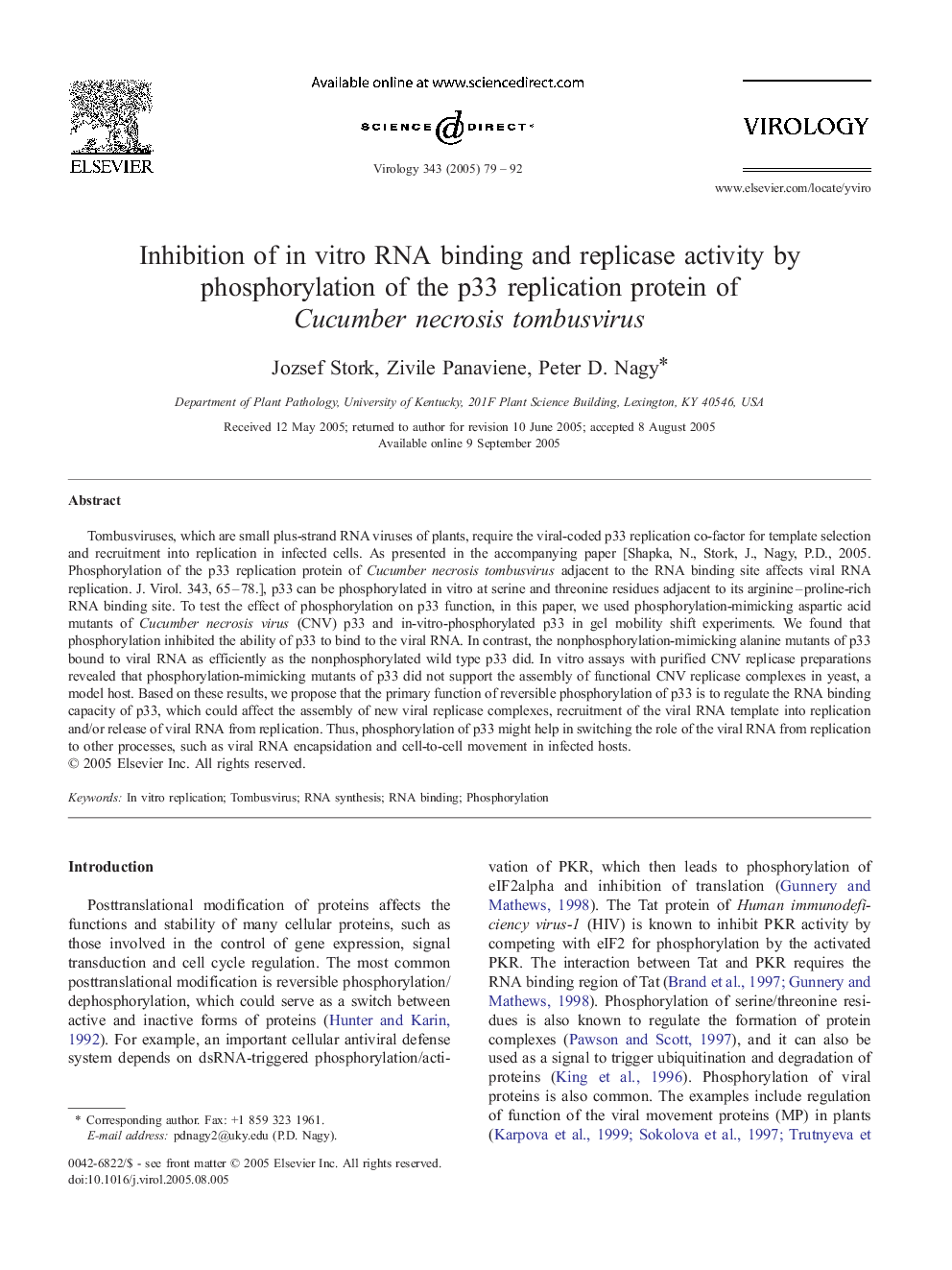| Article ID | Journal | Published Year | Pages | File Type |
|---|---|---|---|---|
| 9287286 | Virology | 2005 | 14 Pages |
Abstract
Tombusviruses, which are small plus-strand RNA viruses of plants, require the viral-coded p33 replication co-factor for template selection and recruitment into replication in infected cells. As presented in the accompanying paper [Shapka, N., Stork, J., Nagy, P.D., 2005. Phosphorylation of the p33 replication protein of Cucumber necrosis tombusvirus adjacent to the RNA binding site affects viral RNA replication. J. Virol. 343, 65-78.], p33 can be phosphorylated in vitro at serine and threonine residues adjacent to its arginine-proline-rich RNA binding site. To test the effect of phosphorylation on p33 function, in this paper, we used phosphorylation-mimicking aspartic acid mutants of Cucumber necrosis virus (CNV) p33 and in-vitro-phosphorylated p33 in gel mobility shift experiments. We found that phosphorylation inhibited the ability of p33 to bind to the viral RNA. In contrast, the nonphosphorylation-mimicking alanine mutants of p33 bound to viral RNA as efficiently as the nonphosphorylated wild type p33 did. In vitro assays with purified CNV replicase preparations revealed that phosphorylation-mimicking mutants of p33 did not support the assembly of functional CNV replicase complexes in yeast, a model host. Based on these results, we propose that the primary function of reversible phosphorylation of p33 is to regulate the RNA binding capacity of p33, which could affect the assembly of new viral replicase complexes, recruitment of the viral RNA template into replication and/or release of viral RNA from replication. Thus, phosphorylation of p33 might help in switching the role of the viral RNA from replication to other processes, such as viral RNA encapsidation and cell-to-cell movement in infected hosts.
Related Topics
Life Sciences
Immunology and Microbiology
Virology
Authors
Jozsef Stork, Zivile Panaviene, Peter D. Nagy,
